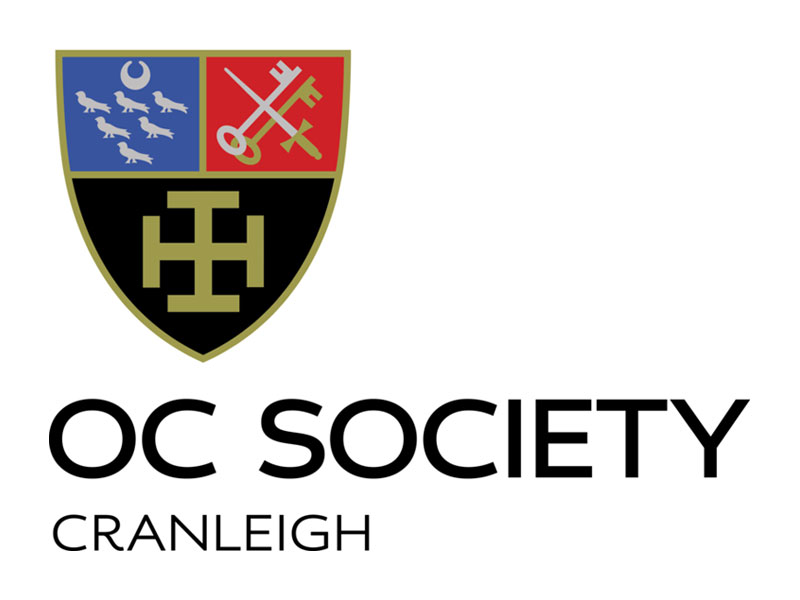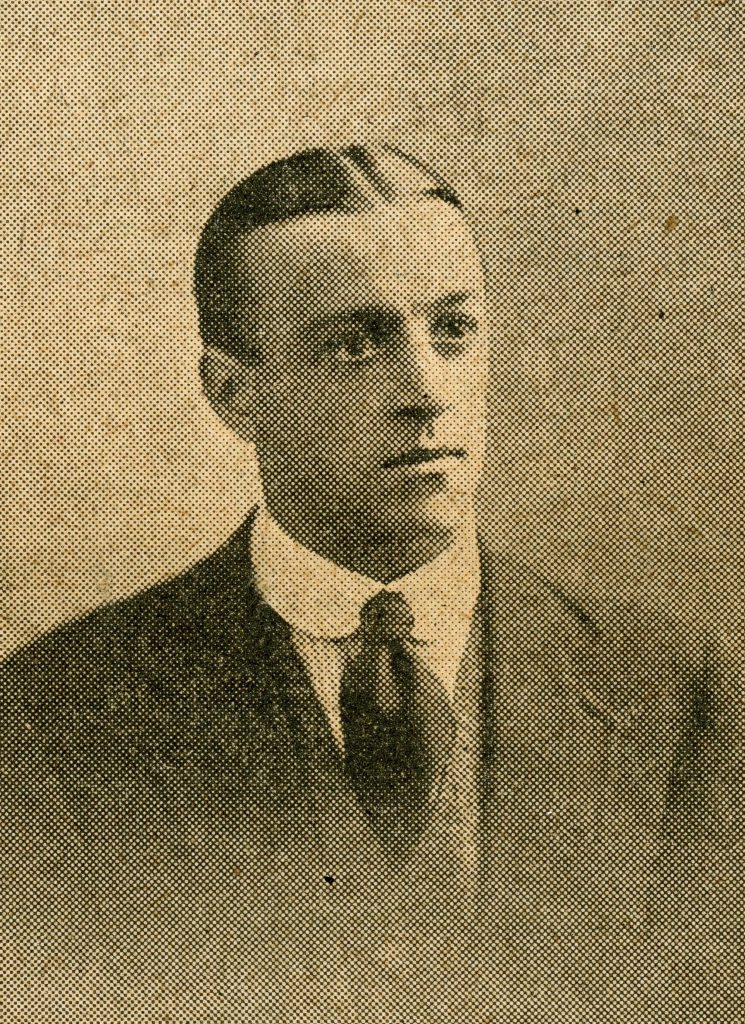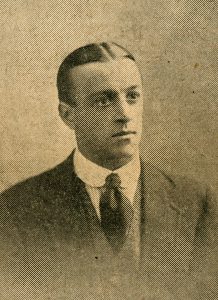
The arrival of 26-year-old Welshman Charles Gower at Cranleigh in January 1916 set in motion the switch of Cranleigh from a relative backwater to a respected public school, a change achieved almost entirely through success on the rugby field.
Born in Carmarthen on New Year’s Eve 1889, Lawford Charles Gower (nicknamed by boys ‘Elsie’ on account of his initials, but never to his face) was educated privately in his home town and went to Downing College, Cambridge where he seems to have achieved little academically but did make the Cambridge XV as a centre for a few games. His university rugby career ended with a wretched performance in 1911 of which The Times wrote: “He let the side down badly, many movements being completely spoiled by him.” However, by the time he was established at Cranleigh his reputation was such that not only was it universally accepted he was a Blue but also that he had played for Wales.
He left Cambridge without taking a degree and went to teach in Natal, South Africa where he continue to play club rugby. On the outbreak of war in 1914 he returned home to join up but in late 1915 was invalided out of the army.
He returned home to look for work and, for him, the timing was fortuitous. In the summer of 1915 Cranleigh had decided to make the switch from football to rugby. The School also desperately needed some young men in the common room as over half the staff had joined up. Gower fitted the bill, even if academically he was limited.
He was an unexceptional teacher. One ex-pupil recalled him struggling to keep ahead while teaching lower classes in geography, English and arithmetic. Jim Swanton (East 1924) mused at “the mutual effect on both parties had he been confronted in his form room with a school inspector”. It was widely believed that his wife prepared and marked many of his lessons. He also lacked some social graces which tended to grate with some of his more formal colleagues and parents, so much so that even Herbert Rhodes, the headmaster, admitted he “could be on the rough side”.
His driving was legendary. He bought one of the first cars in the common room, only to return it a week later when the engine blew up. Nobody had told him he needed to change gears, and he had been driving everywhere in first. Soon after the repaired car was again returned after breaking down. This time the problem was a ruined clutch; nobody had told Gower he needed to use it to change gears. But when it came to coaching rugby he was in a class of his own.
By the autumn of 1916 he had forged a good XV from boys who had not played the game a year earlier. Jim Larkin took part in the first Gower scratch. “The elementary things were rammed home time and time again and his enthusiasm gradually took a grip on us. I got a place as a front-row forward and I can remember the swagger-cane reminder if my shoulder or my bottom were not packed low enough. He made a rugby side out of a rough and raw material inside six months.”
Although Gower missed the 1917 season after re-enlisting with the army, he was back by the spring of 1918 after being invalided out for a second time. By then, rugby was already becoming the single most important facet of Cranleigh life.
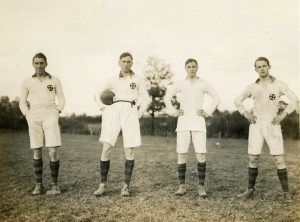
The post-lunch ritual Gower instigated was feared by most. Boys would assemble in the Quad, where he would carefully allocate them to a pitch and a blue or white shirt. They would then head off while Gower took the top side. He was unrelenting with his elite. Scrum practice was held between the end of morning school and lunch, with afternoons spent endlessly training on St Andrews. “Simple things done well and at speed,” said Swanton, “the perfect giving and taking of passes, incessant backing-up, relentless pressure. [Gower] was able to communicate his passion by sheer personality and Welsh ‘huwl’ to the less sophisticated Cranleighans of his time. Maybe he was lucky in the raw material to hand in those early years, but of his genius as a coach there was no question, and the stream of fine players he produced all knew how much they owed to him.”
Gower believed in attack, and had little time for show. He was no fan of the kick-and-follow-up approach, nor did he have any truck with anybody reporting NTC (those designated unfit for sport, or “Not To Change”), who he labelled “scrimshankers”. HP Jacob (1 North 1922), Cranleigh’s first England international, who returned to take over from Gower in 1931, said he believed his old coach was “the best I ever encountered “ and admitted that his own coaching “merely reflected his ideas … he had the gift of inspiring and nurturing the mental and physical promise of his pupils”.
Gower worked his chosen ones until they were fit to drop, telling them at the start of practice, “At the end of this game I want to see 50 bleeding noses.” Anyone who did not tackle as Gower wanted could expect a loud “Go for his legs, boy, don’t cuddle him.” One boy recalled being left speechless when Gower roared: “Why didn’t you tackle him … yes or no.”
Those who aspired to be in the XV were encouraged to give up tuck, do press-ups throughout the day and breathe deeply at all times. And he did not believe in undue praise – Swanton said Gower’s “not bad” was a prized accolade.
Viv Cox (1&4 South 1934) recalled how Gower would visit the prep to assess future talent. “The first sign of the agony to come was the sight of those green stockings cantering up the hill. Our hearts sank into our football boots and we braced ourselves for a hellish hour of torture, of tackling (always the largest forward) and of falling on the ball (always in the filthiest morass on the pitch).” Jeff Reynolds (1&4 South 1933), who played for England and the British Lions as a back, recalled he was a lumbering forward until one day “Gower pulled my overweight body out of the scum and growled ‘boy, go fly half’”.
Cranleigh’s record, especially against other schools, was remarkable and brought with it press coverage nationally. In the first ten years of 55 inter-school matches, 44 were won, with 1,653 points scored against 288 conceded.
Away from rugby and teaching, Gower was a much more relaxed character. Max Machin, who taught alongside him and was a co-founder of the Platypods cricket side with him, described his “fun … his vitality, his humour, his warn-heartedness, his genuine interest in other people … he had friends and acquaintances everywhere”. And he was no mean allround sportsman, actively playing cricket, golf and tennis to within a few years of his death.
The late 1920s were less successful, if only marginally so, Gower noting that “the standard of rugger has improved all round in other public schools, especially those where a holiday is given for beating us”. Even Rhodes seemed to have seen the world had changed, noting: “I do rather feel a change would be good for him [Gower] as well as us.”
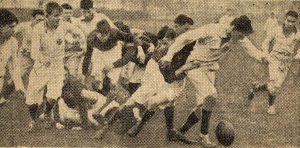
The arrival of David Loveday as headmaster in 1931 signalled the end for Gower. Loveday was determined that Cranleigh’s poor academic record be turned round and also that the arts were to be put on equal footing with sport. It did not help that shortly before Loveday started, Gower had attracted unwanted attention when he was apprehended for drink-driving, the story reaching the national newspapers.
Gower left with Rhodes. Shamefully, The Cranleighan did not even mention his departure, nor did Loveday on Speech Day, and he was almost air-brushed out of history, although he remained an almost God-like figure among Old Cranleighans from the 1920s. In his post-Cranleigh years he did some rugby work for The Times and continued to coach but without making any real mark.
Late in his life he was asked to come and train the OCRFC at the School before the start of the season. Stanley Couchman (2N 1931) who had toured South Africa in 1938 with the British Lions, recalled watching him “in a white sweater and cut-down white trousers working the OCS (all unknown to him), It was the same old Charles, and he had the same effect on the players that he always had”.
John McDermott (2 North 1957) accompanied Gower on a 1961 OCRFC to Edinburgh. “He was a very gregarious fellow who enjoyed the social side of the tour,” he said. “He was however sad to see how Cranleigh rugby had slipped.”
It was only when Gower died in 1963 at the age of 73 that he received his due recognition from the School. The Cranleighan paid him a glowing tribute written by Swanton. Four benches were paid for by OCs and placed on St Andrews with a fitting inscription: “Charles Gower. The architect of Cranleigh rugby”.
A year later the Gower Club, which continues to this day, was formed in his honour. The initial membership was limited to 20, the criteria being 1st XV colours or those who had made an outstanding contribution to Cranleigh rugby. Initially, the club was social but in 1970 they fielded a side of the previous year’s leavers against the 1st XV, a tradition that has carried on to this day.
